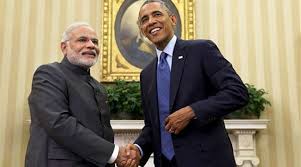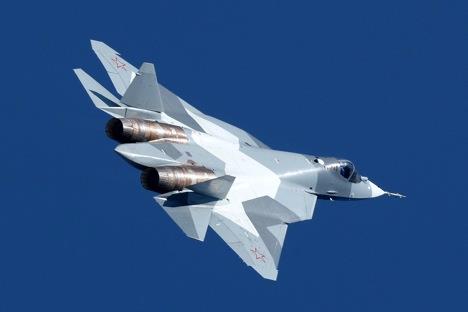2014 was a year of memorable highs for India’s military might. With successful test flight of indigenously developed Low Carrier Aircraft Tejas (LCA), Light Combat Helicopter (LCH), India’s first ‘Air to Air’ missile Astra and commissioning of INS Sumitra, INS Vikramaditya besides many others have proved to be valuable addition to enhancing operational capabilities in the face of increasing threat from China. As per a report released by Stockholm International Peace Research Institute (SIPRI), India is also building a thermonuclear arsenal. Thermonuclear weapons or Hydrogen bombs are more powerful than conventional nuclear bombs. With significantly increased uranium enrichment capacity, sufficient uranium can be produced by India to power the fleet of nuclear powered ballistic missile submarines and amalgamate uranium and plutonium to produce ultra powerful thermonuclear weapons. All of these improvements mark that India has come a long way ahead since the days of Pokhran II tests in 1998.
POKHRAN II, SHAKTI BOMB
Source- Google Images
The role of DRDO and Hindustan Aeronautics Limited (HAL) for introducing cutting-edge technology has been lauded time and again, but there’s still a long road ahead. In the light of recent successes, we must not forget that we are still dependent on arms imports for 70% of our defense equipment requirement.
This article seeks to illuminate the humongous changes being brought about in India’s defence capabilities including upgradation of its soviet-era equipment, industrialized production of indigenously produced technology and the lucrative business opportunities it offers to global firms.
Arms imports: From 2009 to 2013, India accounted for 14 percent of the world’s arms imports, more than any other nation. Russia was India’s main supplier.
Source: SIPRI.org
India has spent approximately $40bn annually since 2009-14 for importing defence equipment, yet we are still way behind China’s whopping $145bn defence expenditure last fiscal. This has been a reason to worry for our policymakers and it’s rightly so. India’s domestic defence industry has historically suffered from lack of innovation, civil sector corruption, limited resources. But, this is going to be history now if all goes as per PM Modi’s plan. The ‘Make in India’ campaign lays down ambitious plans to make transform India from an importer to a net exporter of arms to friendly countries.
Let us understand how.
- Entry of Private players
Defence Acquisitions Council (DAC) has given a go-ahead to projects proposals worth Rs. 1,20,000crores or $19.35bn to plug in the gaps in India’s operational defense capabilities. . These projects included a proposal by Tata Group to manufacture helicopters in India which has been cleared.
The defense market in India is touted to grow to be $100bn strong in 10 years and government is keen to bring in domestic giants to the fore.
On February 12, 2015 Mahindra and Mahindra publicly announced to buy 26% stake in Pipavav Defence, valued at 4000crores after this takeover. It is India’s largest private shipyard and is capable of building warships, patrol boats and cargo ships for customers across the world. It’s a signal of coming days ahead as M&M seeks to strengthen its defence production capabilities with this takeover.
The government, on its part, is working to remove bottlenecks for arms exports as well as doing away with bureaucratic hassles for indigenous R&D, development and production of weapon systems. Also, the government is toying with the prospects of allowing exports so that market can no longer be classified as monopsonist with the government as the single buyer.
- Raising FDI cap for the sector
The foreign direct investment ( FDI) limit in defense was raised to 49% from 26% in August,’14 to address large imports by indigenizing production. The government also allowed 24% portfolio investment through the automatic route. This would in transfer of technology and give a fillip to domestic manufacturing.
- Warming up to Russian and American firms
Arms exports: The United States and Russia are the world’s two largest exporters in arms.
Source: SIPRI.org
India has had bilateral summit with both Russia and USA in the recent months. She is expected to spend $120 billion in arms acquisitions over the coming decade, with its 1.5-million strong armed forces still grappling with several operational gaps ranging from fighters and helicopters to artillery and submarines. That is why, arms trade has always been in the back of minds of world’s most powerful leaders.
India has renewed Defense Framework Agreement with US, it would guide defense co-operation between the two countries for the next decade. India also signed the Defense Technology and Trade Initiative (DTTI) which would entail Transfer of Technology (ToT) and explore aircraft carrier technology-sharing and design, and possible cooperation on development of jet engine technology.
Russian President Vladimir Putin visited India in December 2014. With Russian economy in shambles, he had strictly meant to do business. The agreements that were signed by both the leaders include joint Fifth Generation Fighter Aircraft (FGFA) project and joint development of Multi-role Transport Aircraft (MTA).
Under FTA, India is expected to jointly build 200 fighter jets at the cost of $30 billion.
400 multi-role Russian helicopters will be assembled in India. Russian state owned giant Rosatam will build 12 nuclear energy reactors in India within next 12 years.
- Launching Aero India-2015
Bengaluru is all set to play host to Aero-India, the 10th edition of international edition of the aerospace and aviation exhibition at Bengaluru from February 18-22 It will be inaugurated by Prime Minster Modi himself and will include sectors like defence manufacturing and airport infrastructure besides aerospace, defence and civil aviation. The theme of the premium airshow will unsurprisingly be ‘Make in India’.
Alongside this, the defense manufacturing investors’ summit and global CEOs conference will be held for the first time. Around 150 CEOs each from foreign and domestic industries have been invited.
Many global aerospace giants like the Boeing Company, Airbus Group, Dassault Aviation, Lockheed Martin and United Technologies Corporation will be in attendance. They are looking to invest in a joint venture to get a piece of market pie that is undeniably the fastest growing in the whole world.
Some experts believe India’s defense industry today mirrors its Chinese counterpart in 1998. The Chinese military had filed for 313 patents in 1998 and this figure increased to filing of 15,000 patents in 2010. This upsurge in innovation and was brought about by integration of end-consumers and manufacturers, that is, it allowed the military to strategically oversee defence production processes. India can take a lesson or two from their experience.
Summing the right strategic vision, integration of research and development (R&D) and industrial production process, streamlining of bureaucratic procedures and political will, India can surely see itself selling indigenously developed and manufactured technology being exported to friendly countries.
By Shriya Dargan
REFERENCES
- http://indianexpress.com/article/india/india-others/russia-remains-india-important-defence-partner-says-pm-modi-both-countries-sign-key-nuclear-deal/
- http://timesofindia.indiatimes.com/india/India-US-renew-defence-pact-to-pursue-co-production-projects/articleshow/46013581.cms
- http://www.thehindu.com/news/national/india-us-may-sign-defence-pact-during-obama-trip-parrikar/article6781752.ece
- http://economictimes.indiatimes.com/slideshows/infrastructure/agni-v-missiles-maiden-canister-based-trial-successful/strike-range/slideshow/46076521.cms
- http://www.bharat-rakshak.com/NEWS/newsrf.php?newsid=21674
- http://www.bbc.com/news/business-30850595?ocid=hk-in_ob-vid-q4
- http://in.reuters.com/article/2014/07/10/india-budget-defence-idINKBN0FF0WQ20140710
- http://www.bharat-rakshak.com/NAVY/Galleries/AirArm/60+years+of+Naval+Aviation
- http://thediplomat.com/2014/06/is-india-building-thermonuclear-weapons/
- Stockholm International Peace Research Institute (SIPRI) website
- http://nuclearweaponarchive.org/India/IndiaShakti.html








































